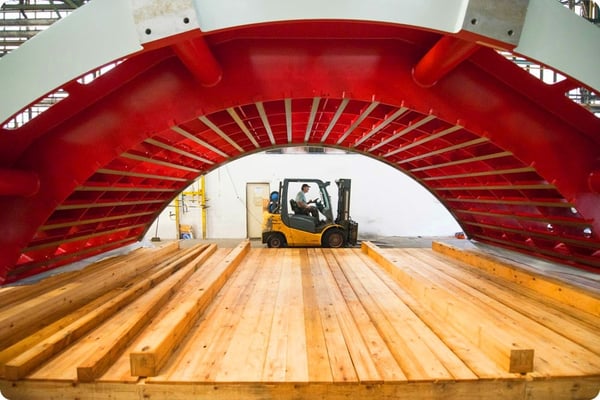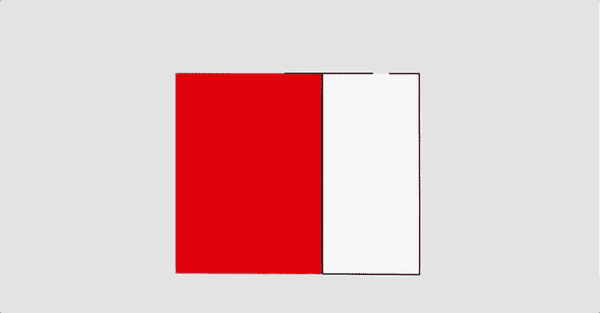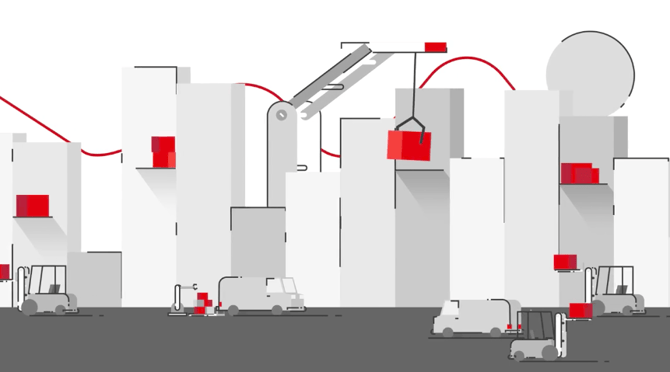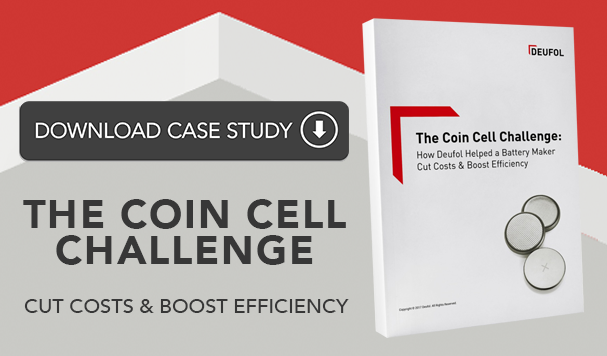Custom-engineered packaging or boilerplate solution? Many manufacturers and industrial companies wrestle with that question. On one hand, a stocked, cookie-cutter packaging solution may seem more cost-efficient. After all, there’s less upfront design work involved, so the cost of the packaging may be substantially less than a custom solution.
However, custom packaging comes with its own set of benefits. The packaging is designed specifically for your needs and objectives. It’s produced to minimize quality risks and provide maximum protection. And a custom production process may bring cost-efficiencies that save you a substantial amount of money in the long run.
Consider a solution that is custom designed for your products, your quality targets, and your financial objectives.
If you’ve never used custom packaging before, you may be unsure of exactly how a custom solution is developed or how the package can be developed specifically for your goals. At Deufol, we specialize in custom-engineered solutions. Our experienced team of designers and engineers works with companies across a broad range of industries to develop packages and processes to meet their unique objectives.
Below is the five-step process we use when developing custom packaging for our customers. Before you contract with a custom packager, make sure you understand their process and how it impacts your final product.
Step 1: Design
Our custom process starts with a deep-dive into your goals, objectives, and risks. Our engineers and designers sit down with you to better understand what you’re trying to accomplish and what threats may stand in your way.
We then use that information to develop a range of design options. After we narrow the options, we develop prototypes for testing and analysis. We implement any necessary revisions and then create a final product.
Our design phase doesn’t just include the package itself, though. We also design every aspect of the packaging process, from equipment to workflows to facility layout and more. The goal is to create a holistic packaging a distribution process that maximizes quality, minimizes waste, and helps you reach your goals.

Step 2: Document
Custom packaging should be a long-term solution. That’s one of the primary differences between a boilerplate solution and a custom strategy. A boilerplate solution is transactional - you simply buy the packages as you need them. You own the custom process, so you can continue using it for years or decades.
One of the best ways to support a long-term strategy is through detailed documentation. Your process, designs, needs, risks, and more should be documented in guides and support manuals from the packaging partner. That way, you always have a key point-of-reference as you analyze or make changes to your packaging process in the future.
A sampling of important documentation includes:
✔ Manufacturing, safety, and quality control plans;
✔ Equipment assembly and disassembly manuals;
✔ Process and equipment control parameters;
✔ Facility and production equipment layouts;
✔ Value stream mapping;
✔ Process flow diagrams; and
✔ Standard work instructions.
Step 3: Create
Once a solution is designed and documented, the next step is to create the plan’s components. This could include producing any equipment needed. At Deufol, we have an in-house machine shop to produce any required packaging equipment. The create stage could include the implementation of software, automation, and other tools necessitated by the design.
There’s also the installation of equipment and machinery. You may be producing the packaging in your own facility, in which case the packaging partner may need to come onsite to install the assembly equipment. Or you might want to have the packager produce the packaging in their facility, in which case they will install the equipment in their building.
Step 4: Implement
Finally, the process is ready for use. Equipment should be tested and refined. Packaging samples should be produced and tested by your in-house team and even a few select customers. You may even want to do a trial run of the entire packaging process to test its impact on your efficiency and labor needs. Assuming everything is approved, it’s time to start producing your packaging.

Step 5: Sustain
Perhaps the final phase is the biggest distinction between boilerplate packaging and custom solutions. Again, a custom solution should be a long-term strategy. With that in mind, you should expect some level of ongoing support from the custom packaging partner.
For example, they may provide equipment diagnostic checks to prevent issues before they arise. The packager could offer preventive and productive maintenance. They may provide equipment and tooling refurbishing. There are a wide range of support services a custom packager should be able to provide to maximize your long-term ROI from the custom solution.
Your products are too unique to settle for boilerplate packaging. Consider a solution that is custom designed for your products, your quality targets, and your financial objectives. Before you select a custom packager, make sure you fully understand their process and how it affects the final outcome of your project. ![]()






Let Us Know What You Thought about this Post.
Put your Comment Below.